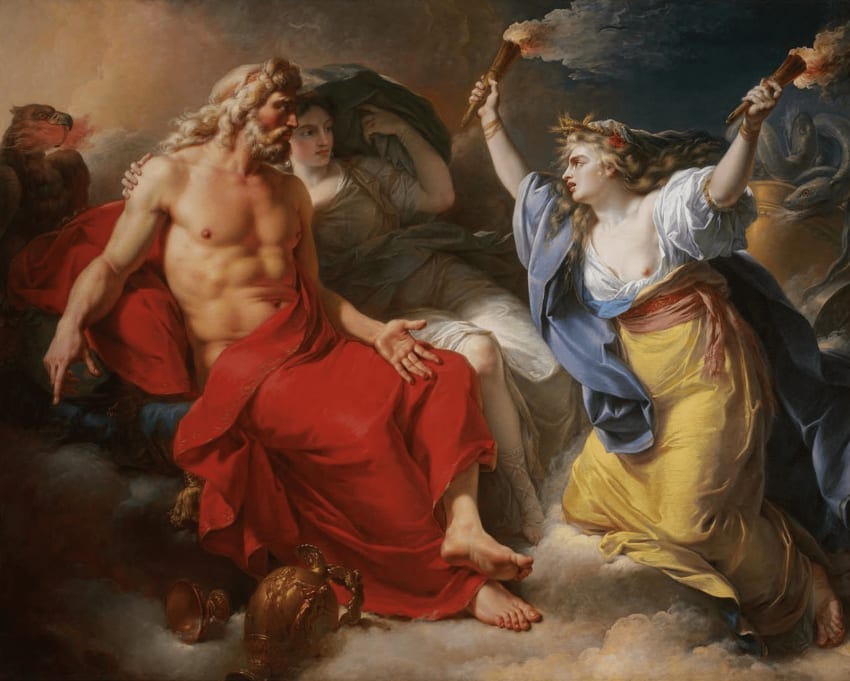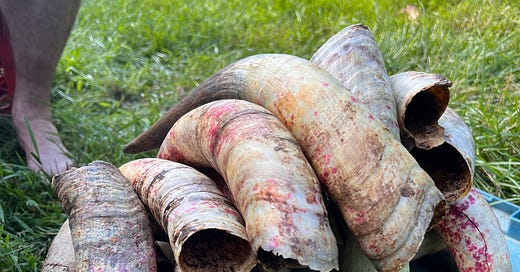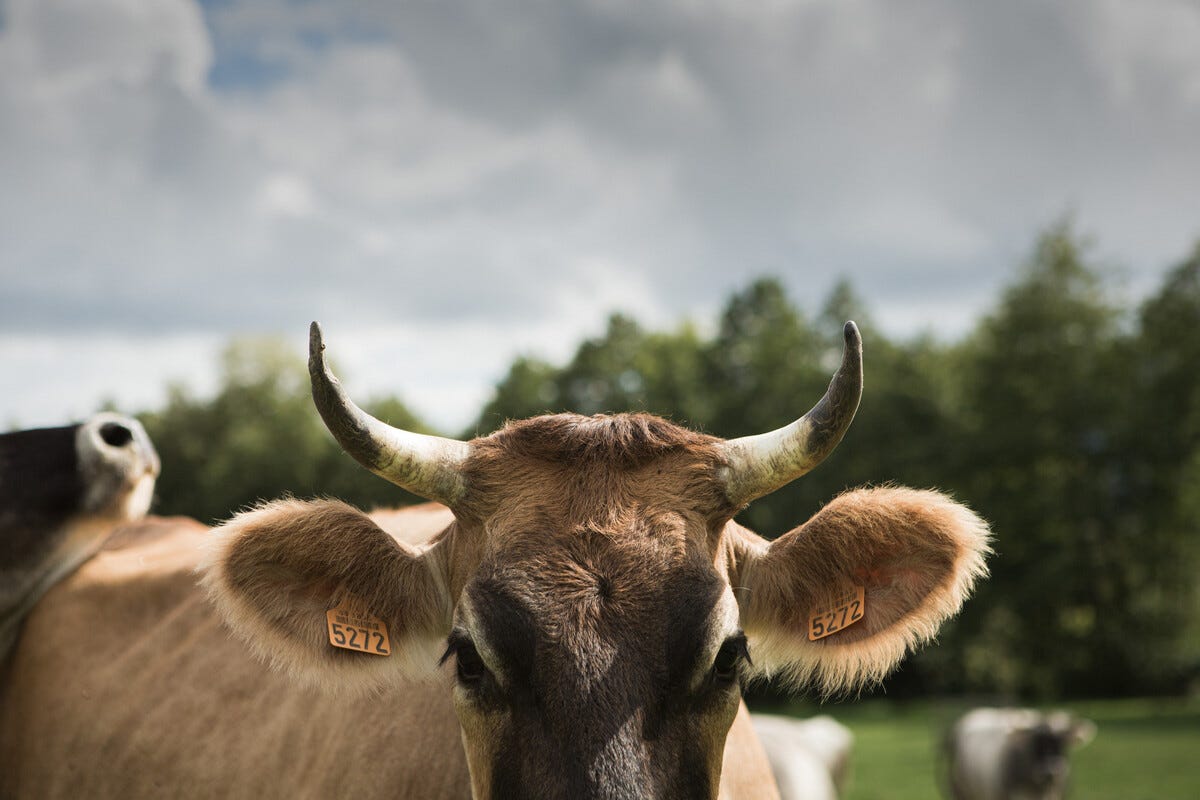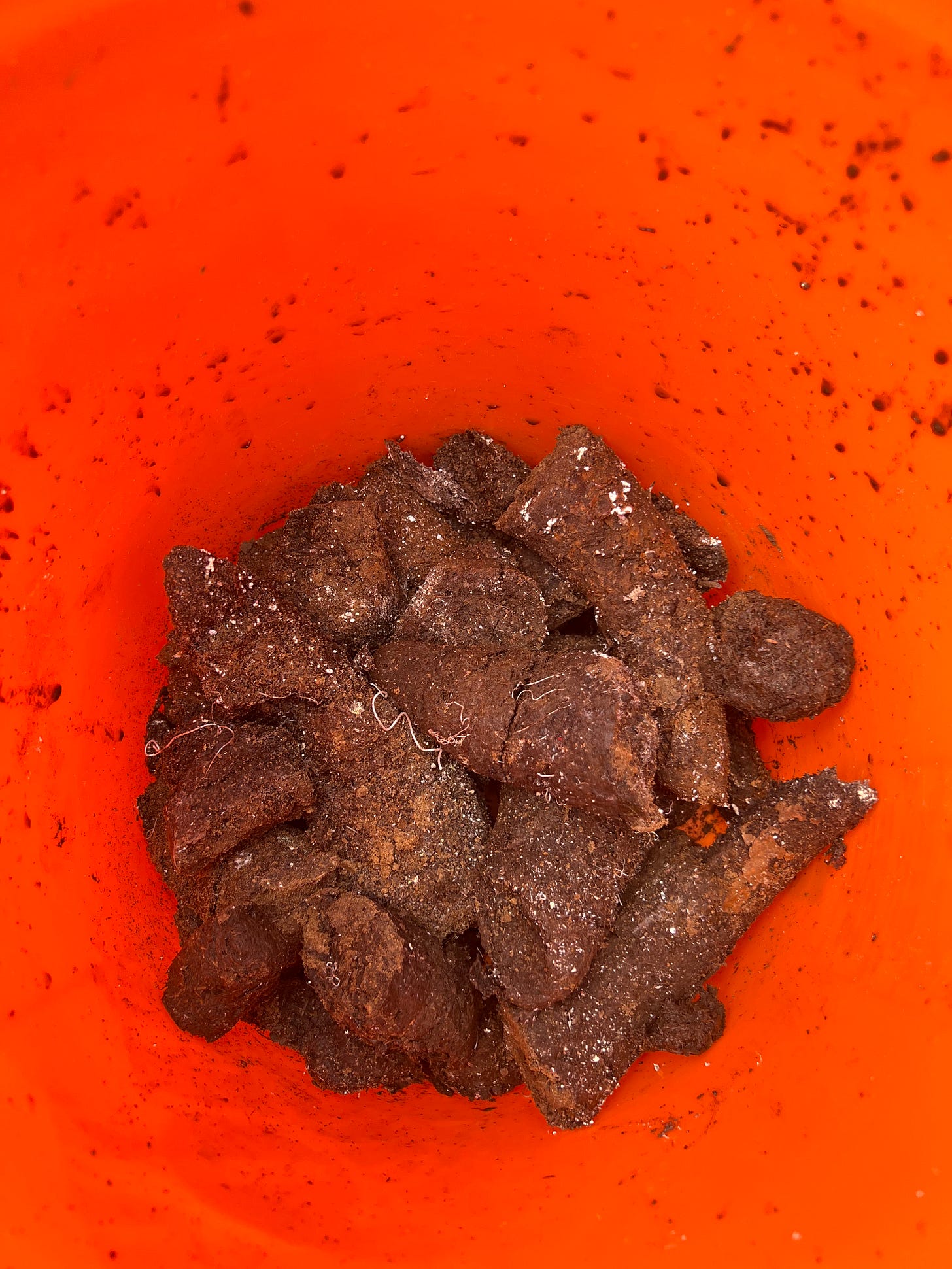We’ve been busy celebrating the arrival of summer. I find it hard to write at this time of year, when the sweet peas are finally blooming and the rains have cleared. I struggle to sit and be diligent. I want to be outside, all day, in the garden, sweating and digging, with dirty elbows and bare, grubby toes. I want to be in forests and lakes, jumping and swimming, running and playing. I don’t want to be sitting at my computer typing. Alas, this is the work. I saw this great post on Substack Notes that said, “Being a writer is like having home work every day”, and in July, it is so true.
I’ve been struggling to write ever since we came back from our St John’s Festival. It was such a beautiful homeschool gathering. It felt precious, private, sacred.
I came home wanting to still be up there, wishing we could transport our own comfy bed to a little house in Muskoka. We’ve tried, so, so many times to move up there, before the pandemic, during the pandemic, and after. I have rented there, house-sat there, lived in a tent in my mom’s backyard, lived in a trailer in my mom’s front yard, camped at Arrowhead, camped at Algonquin, put down deposits on land, lost deposits on land, fought to secure a job that came with lodging, lost the job that came with lodging, always ending up back in a bungalow beside the Humber River.
I almost felt like I shouldn’t talk about what we did; like it needed to be our little secret, this special moment in time that only exists for a few people. However, I feel a call to share our work. If we don’t share what we’re up to, how can those seeking the same kind of community and lifestyle learn and grow with us?
SO, I will try and tell the story of the horns as I experienced it.
Did you know that cows raised on Biodynamic Farms don’t get their horns cut off?
Did you know that female cows grow horns too?
Digging up the biodynamic horns that were carefully filled and buried at the Autumn Equinox last fall was incredibly exciting. Producing our own Biodynamic Preparation #500 Horn Manure is a huge step forward in self-sufficiency for our tiny biodynamic community.
According to Steiner, the way you make BD 500 is you take the horn from female cows, fill them with manure from a lactating grass fed cow, and bury them for at least six months.
The “manure from a lactating grass fed cow” gets a lot of scoffs, usually.
“Do you know how they can tell if the manure is from a lactating cow? The paddy looks like a rosette.” Elyse twinkles.
It’s hard to find horns from a grass fed female cow in Ontario.
Industrialized farms don’t let cows grow horns.
Before starting down this path of organic+, I didn’t even know that female cows could grow horns. I didn’t realize that the industrialized practice is to “dehorn” and that it was traumatic. I didn’t understand how important horns were to their overall health.
“Cattle themselves have a long lineage back in evolutionary time of Ungulates that includes other horned ruminants such as goats, antelopes and giraffes. Native cattle such as the Bison, Yak and Auroch have lineage to the Earth’s evolutionary DNA, void of human intervention. All were with horns. The horn itself is not just an auxiliary growth of bone protruding from the skull. On the contrary the horn is a condensed protrusion of the skin. The bone grows into it forming a boney core that is penetrated by blood cells, furnished with nerves and containing internal air spaces that develop and connect with the sinus cavities and literally the breath of the cow herself. Cattle evolved with blood filled, sentient horns that played a key role in the function and evolution of the species. In Biodynamic agriculture this matters.”
Our mentor Elyse drove twelve hours to the
to purchase our biodynamic horns. She has long silver-hair that bounces and intelligent, piercing eyes, a musical laugh and a passion for children, nature, all things Steiner, and of course, biodynamic stirs. She travels all over teaching in different communities and is an active “stirr-er” wherever she goes.“Oh!” she exclaimed. “The Biodynamic Association of Ontario out in Kincardin has an incredible machine, like a sausage stuffer, that just stuffs the horns, so that you don’t have to spend all that time scooping manure into a horn with a spoon. It’s miraculous! Just miraculous!” She has led us to this point with a playful yet serious reverence for the elemental beings that surround us, and on this day she is alight, a tiny fairy flitting about, eyes full of wonder and voice full of awe.
“Oh, this is better than Christmas!” she cries, as the horns finally began to emerge from the sandy Muskoka soil. Oli and Serge and Celine carefully lift the horns, shielding the precious contents from the sunlight. There are worms and tiny bugs crawling all through it; the manure no longer smells of excrement, it has been transformed into a preparation teeming with life. It smells earthy, fragrant and rich.
The horns themselves are exquisite, each as unique as a finger print.
As the group went inside to enjoy a potluck feast, I lingered outside, soaking up time with Elyse and helping to prepare the first stir. We sat and chattered happily, taking turns dynamizing the preparation by stirring it clockwise and then counter-clockwise.
“We stir clockwise and then counter-clockwise to mimic the pumping of the blood in our bodies,” explains Elyse. The stirring also structures the water.
After an hour of stirring together as a community, the preparation is ready to spray.
We call the children and those who are interested come pouring into the front yard. We walk methodically, singing songs with corn brushes in hand, plunging the brush into the preparation and then raining flying droplets of BD 500 out as the sun is setting. It is joyful, heart-filled work.
We divided the BD500 into glass jars, sharing them equally among the families, and with full bellies, drove home.
In researching the St John Festival, I learned about its pagan roots and its relationship to Summer Solstice, occurring only three days after, similar to how there’s three days at Easter and the resurrection of Jesus. But until writing this, I didn’t realize that who pagans were celebrating was Demeter, the Goddess of Agriculture and Grain.
Demeter. Also known as Ceres. The namesake of the governing body of biodynamics around the world: Demeter International. Duh. Ohhhh.
In Greek Mythology, Demeter is a mother who tears down the world in search of her child. She holds back the harvest until her daughter is returned to her.
Persephone, her daughter, reigns as hero in this story. She is the girl stolen to Underworld who rises triumphant over her obstacles, a Queen and Goddess of the Seasons.
Change. Change. Change.
This was the spirit of St Johns 2024 for me. We’ve all undergone turmoil and pain in the past year(s). It has been challenging and difficult, filled with grief and loss, yet equal parts beauty and wonder.
Change. Change. Change.
There’s this Filipino Waldorf Mom Blogger who describes reading stories to her children about St. John, and one of them tells how he could see the true being of everyone before him. “If a man spoke lies, he would see toads slipping out of his mouth. If he saw someone of virtue, he would see light emanating from him. His message to humanity was simple: change.”
I find it funny she mentions toads because the children kept finding toads all around the front yard. They would seize upon them with delight and carry them (mostly gently) back to an elaborate Toad House being diligently created.
Elyse raised her eyebrows knowingly and said in a hushed tone, “That’s a gnome’s greatest fear…punishment of being turned into a frog.” Twinkle, twinkle.
The date of June 24th as the St John’s Festival was chosen by the early church because it wanted to co-opt the pagan festival honouring Demeter’s search for her daughter Proserpine, or as I like to call her Persephone.
The god of the Underworld is called Hades and he is represented by the planet Pluto. Hades yearns for the joys of married love and fatherhood, and he steals Persephone as his bride.
Demeter undertakes a frantic search to reclaim Persephone, armed with two torches.

As Demeter walks the earth searching in vain for Persephone, the sun sinks and darkness falls. With each step, the growth of crops halts. A desert appears.
Zeus, represented by the planet Jupiter, sends an order to Hades to free his daughter, but Hades claims she has eaten “several” of the pomegranate seeds from the underworld, and everyone knows those who have eaten the food of the dead cannot return to the world of the living. Hades insists Persephone had willingly eaten his pomegranate seeds and, in exchange, she must now stay with him.
Demeter wages a war. The people are starving and the cries reach the ears of Zeus. He negotiates a peace: half the year Persephone will stay with Hades, and half the year she will return to Demeter and the land of the living.
When Persephone returns, fertility and abundance explode. Gardens grow, flowers blossom. Crops flourish to be harvested in autumn. But, the winter winds call, and when Persephone is forced to return to the Underworld, winter envelopes the world.
Demeter’s grief blankets the land of living in ice and frost and snow and nature sleeps, awaiting her return.
And so, Persephone became the Goddess of the Seasons and the Queen of the Underworld, and Demeter is celebrated for her abundance and fertility, a happiness that returns June after June.
The story is captivating. Even Walt thought so.
St. John’s Tide is a time for renewing human conscience, not just our own internal voice, but the inner voice of the collective conscience of humanity.
St. John’s message to humanity was: change.
Many of us have had a tough year. We’ve had to overcome difficult obstacles and rise from the ashes. This year’s festival felt like a celebration of how we are always changing, an embracing of our natural inclination to change, a feeling that maybe change is good, and an acknowledgement that nothing lasts forever.
Elyse reminded us, “People say that humans are bad for the Earth but we are not, we are not bad for the Earth — we are OF the Earth. Our role as caretakers is vital.”
Side Bar: Funny Pig Video
In researching summer solstice celebrations around the world, I came across this youtube footage of a solstice festival in a tiny Andean village in the mountains of Peru, and, well… it felt like some kind of metaphor…the path isn’t always clear.
Until next week…
Kate







Wow, I knew nothing at all about any of this. Quite fascinating and illuminating. Thanks Kate!
Thank you for this beautiful piece ✨❤️ I felt as if I was there and your descriptions and writings are really inspiring 🙌🏼🙌🏼